Roman gladiators have long fascinated us as fierce warriors who fought for their lives, honor, and fame in ancient arenas. But they were more than just fighters; they embodied Roman power, entertainment, and complex social dynamics.
Beneath the grand performances lay an intricate secret language—a system of signs, signals, and brotherhoods that shaped their identity and survival.
The Secret Language of Gladiators
This secret language was not limited to combat; it served as a vital means of communication both inside and outside the arena. Gladiators relied on subtle gestures to coordinate their movements, convey intentions, or sway the crowd’s judgment. Beyond the battles, brotherhoods known as collegia formed tight-knit communities that provided protection and support.
Understanding these elements unveils a deeper understanding of gladiatorial life—where survival hinged as much on unspoken communication and solidarity as on mastery of weaponry.
Gladiators in the Cultural Evolution of Ancient Rome
Roman gladiators also played a significant role in the broader narrative of ancient Rome’s cultural evolution. The evolution of Roman sculpture, which often portrayed these warriors, showcases a distinct emphasis on realism and the depiction of power. These sculptures served not only as artistic expressions but also as tools for political propaganda and religious devotion.
Furthermore, gladiators were frequently associated with specific deities from the Roman Pantheon, reflecting the values, beliefs, and customs that influenced their lives. At the core of this pantheon are significant figures representing power, justice, and wisdom—qualities that resonated deeply within the gladiatorial arena.
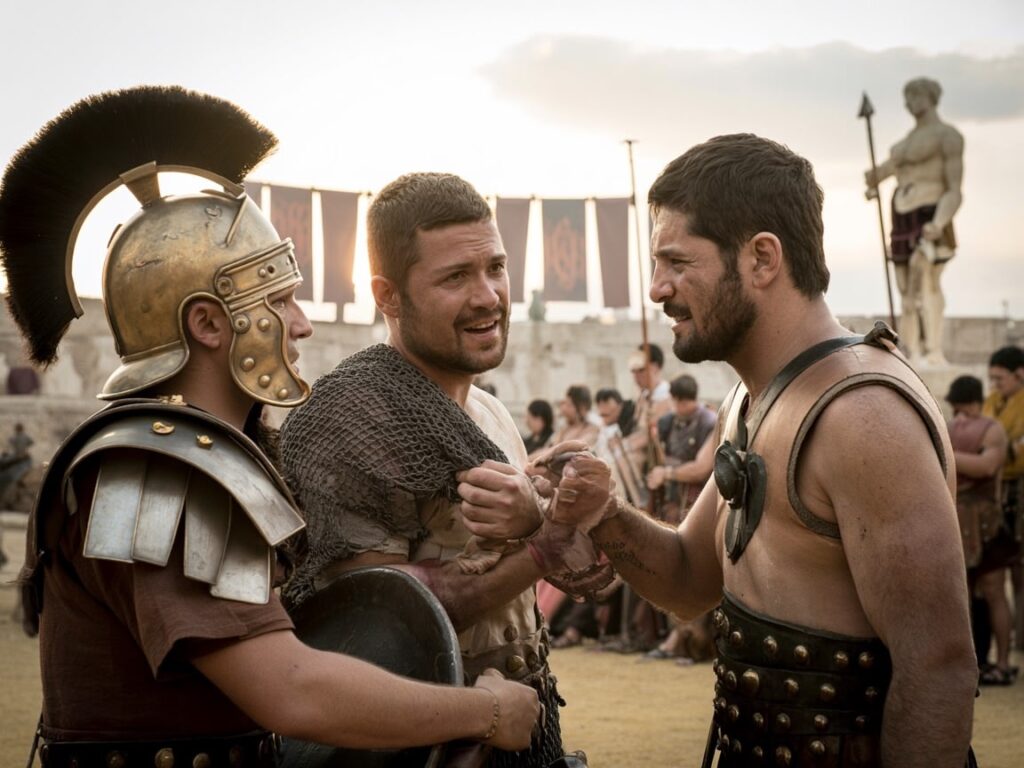
Origins and Social Status of Roman Gladiators
The Origins of Gladiators
Gladiators originated from funeral games, where combat was part of honoring the dead. These early fights symbolized a ritualistic offering, believed to appease spirits or demonstrate bravery. Over time, gladiatorial combat evolved beyond these ceremonies, becoming public spectacles that captivated Roman society. Such events were often intertwined with the rituals and sacrifices that formed an integral part of Roman religious practices.
The Role of Free Men in the Arena
Contrary to popular belief, not all gladiators were enslaved or forced into fighting. Free men volunteers chose the arena as a path to fame, fortune, or personal redemption. These volunteers often came from lower social classes but also included individuals seeking social mobility or escaping debts. The allure of glory and prize money made the profession surprisingly attractive for some.
Julius Caesar’s Influence on Gladiatorial Games
Julius Caesar played a crucial role in expanding gladiatorial games. He transformed them from private funeral rites into grand public events, integrating them within political agendas to gain favor among the masses. This shift not only increased the scale and frequency of fights but also embedded gladiatorial combat deeply into Roman culture, reflecting the political instability and weak leadership that characterized certain periods of the empire.
The Diverse Backgrounds of Gladiators
Gladiators represented a broad social spectrum:
- Enslaved prisoners of war or criminals serving sentences.
- Professional fighters under contract.
- Volunteers pursuing status or economic benefits.
This diversity influenced their treatment and roles within society. While still marginalized by many, successful gladiators could achieve considerable celebrity and respect, blurring social boundaries in unexpected ways.
The Impact of Gladiators on Roman Culture
The fame of gladiators often transcended the arena, influencing various aspects of Roman art. This art reflects not only the aesthetic values of its time but also the social, political, and cultural dynamics that shaped the Roman world.
The Connection Between Gladiators and the Roman Military
Moreover, the power and strategy of the Roman military during this era also played a significant role in shaping the landscape of gladiatorial combat. The military’s vast reach and intricate structure often influenced the selection and training of gladiators, further intertwining their fates with that of Rome itself.
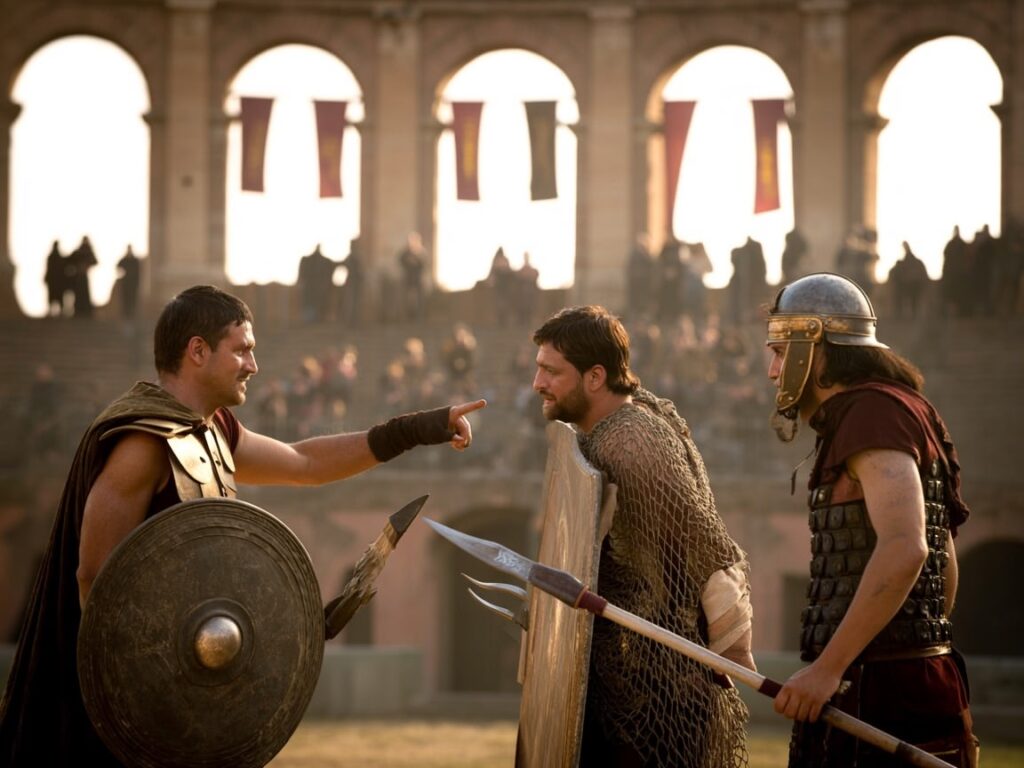
The Organized World of Gladiatorial Combat
Roman gladiators were organized into distinct classes, each defined by their skill level, experience, and fighting record. This classification system helped maintain balance and excitement in the arena by pairing opponents with similar capabilities. Some of the most well-known classes included:
- Murmillo: Heavily armed with a large shield and helmet, often matched against lighter, faster fighters.
- Retiarius: Equipped with a net and trident, relying on agility and strategy rather than brute force.
- Thraex (Thracian): Known for a curved sword and small shield, focusing on quick strikes.
Each fighting style carried specific significance beyond mere combat effectiveness. These styles reflected regional influences, personal strengths, and tactical preferences. Gladiators trained intensively to master their designated style, turning their combat into a form of art as much as survival.
Strict combat rules governed the bouts to prevent unnecessary fatalities. Death was not always the expected outcome; matches often ended when one gladiator was seriously wounded or surrendered. Referees monitored fights closely to enforce these rules, ensuring the spectacle remained dramatic yet controlled. Life-or-death decisions sometimes rested on signals from the editor (game organizer) or crowd reactions.
This structured approach to gladiatorial combat balanced brutality with order—crafting an environment where skill and strategy could shine within defined boundaries.
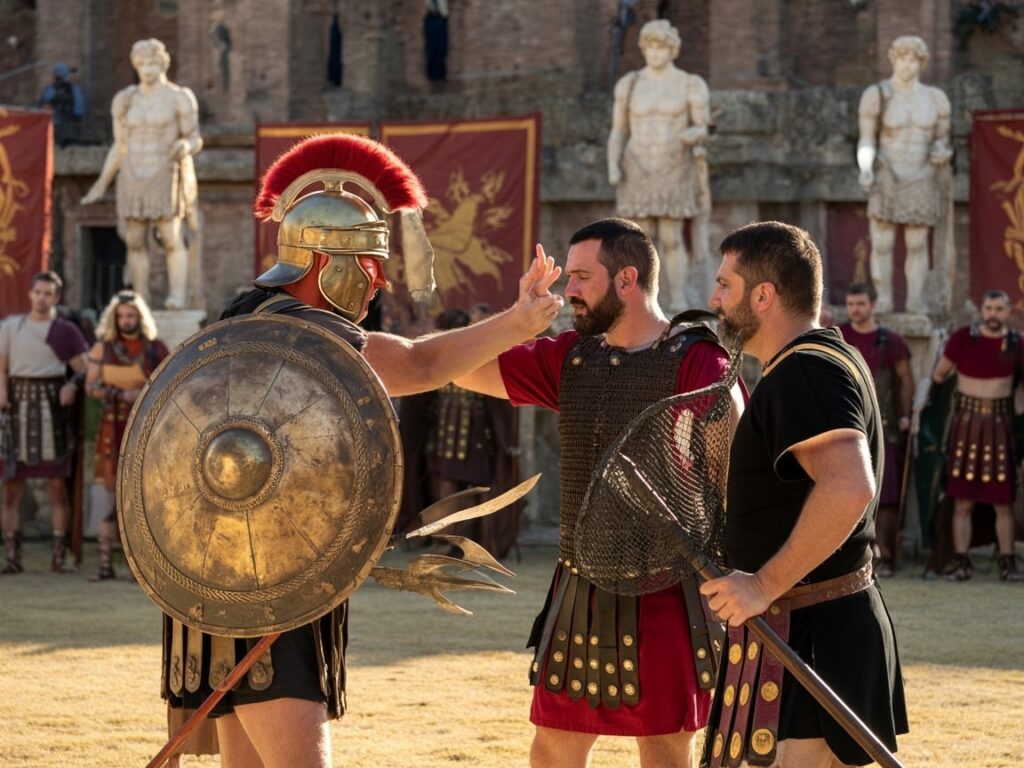
Signs and Signals in the Arena
Gladiators relied heavily on non-verbal communication in the heat of battle. The roar of the crowd and clashing weapons left little room for spoken commands. Instead, gladiator signals such as hand gestures and body language played a crucial role in coordinating tactics, indicating readiness, or signaling surrender.
Common Gestures Used by Gladiators
Common gestures included:
- Raising a finger or hand to request a pause or signal fatigue.
- Eye contact combined with subtle nods to synchronize attacks.
- Positioning weapons or shields as silent cues to teammates or referees.
Interestingly, some of these gestures may have parallels in modern American culture, highlighting the universal nature of non-verbal communication—American gestures often carry similar meanings.
The Complexity of the Thumbs Down Gesture
The thumbs down gesture—often dramatized in modern media as an immediate death sentence—holds a more complex truth. Ancient sources suggest this signal was not universally understood as a call for execution. Some scholars argue that:
- A thumbs up might have indicated mercy, allowing the gladiator to live.
- A closed fist or turned thumb could have been the actual sign for death.
- The decision involved the editor (the presiding official), whose gestures communicated life-or-death outcomes through a secret language known only to those present.
This nuanced system of signs reflects the careful balance between spectacle and survival in gladiatorial contests. Understanding these signals reveals how deeply embedded communication was within their brutal performances—The Secret Language of Roman Gladiators: Signs, Signals, and Brotherhoods was far more intricate than popular imagination suggests.
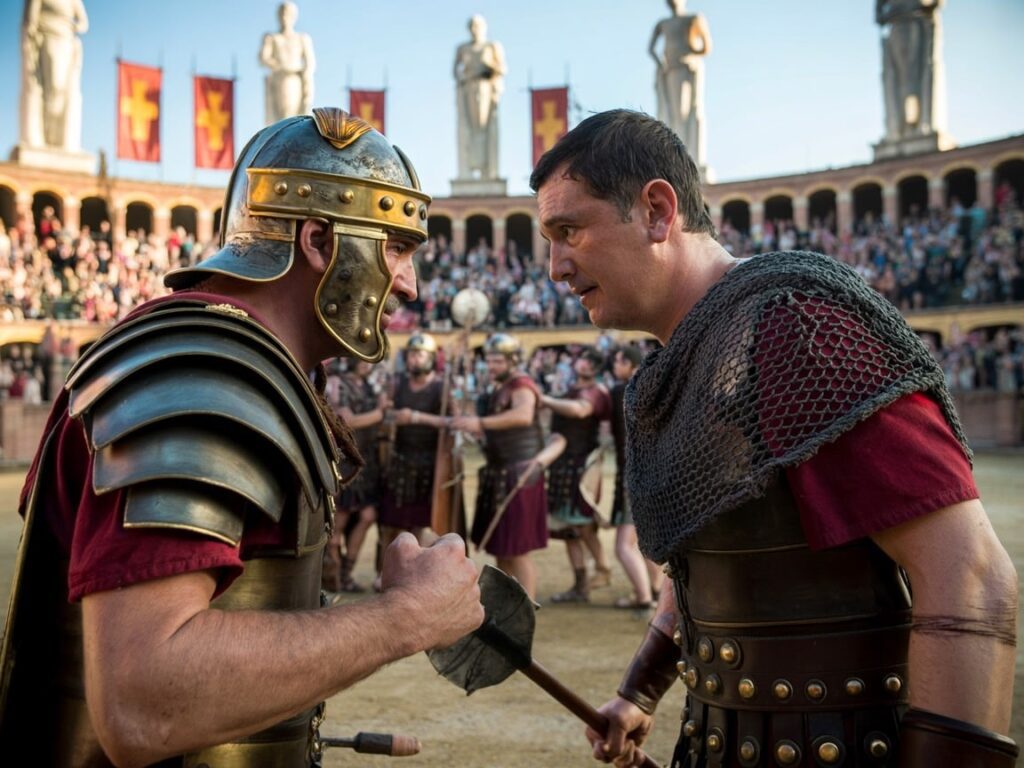
Brotherhood Among Gladiators: The Collegia System
Gladiator brotherhoods took shape through the formation of collegia unions, which functioned as trade unions for these fighters. These collegia were more than just social clubs—they provided crucial support systems within the harsh realities of gladiatorial life.
Key Functions of Collegia
- Mutual protection: Collegia ensured that members received proper funerals and commemorations after death, a vital concern given the dangerous nature of their profession.
- Financial aid: They managed collective funds to offer monetary compensation to families of fallen gladiators, easing economic burdens left by loss. This aspect of the collegia system mirrors the broader trade and economy in Ancient Rome, which played a significant role in shaping the lives of its citizens, including gladiators.
- Religious roles: Each union often had protector deities, invoking divine favor and spiritual solidarity among members.
Elected leaders played pivotal roles within these groups. They organized meetings, enforced rules, and represented the union’s interests in dealings with arena officials and trainers. Leadership was not merely administrative—it symbolized trust and respect earned from fellow gladiators. This structure cultivated a strong sense of identity and loyalty, turning individual fighters into a tightly-knit brotherhood.
The collegia system highlights how gladiators forged community bonds beyond the spectacle of combat. Their alliances went deeper than survival; they created networks based on honor, protection, and shared experience. This internal cohesion shaped their social dynamics both inside and outside the arena walls.
Interestingly, these collegia unions can be seen as a form of labour trade unions that provided essential support to their members in various aspects of life, further emphasizing their significance in the ancient Roman society.
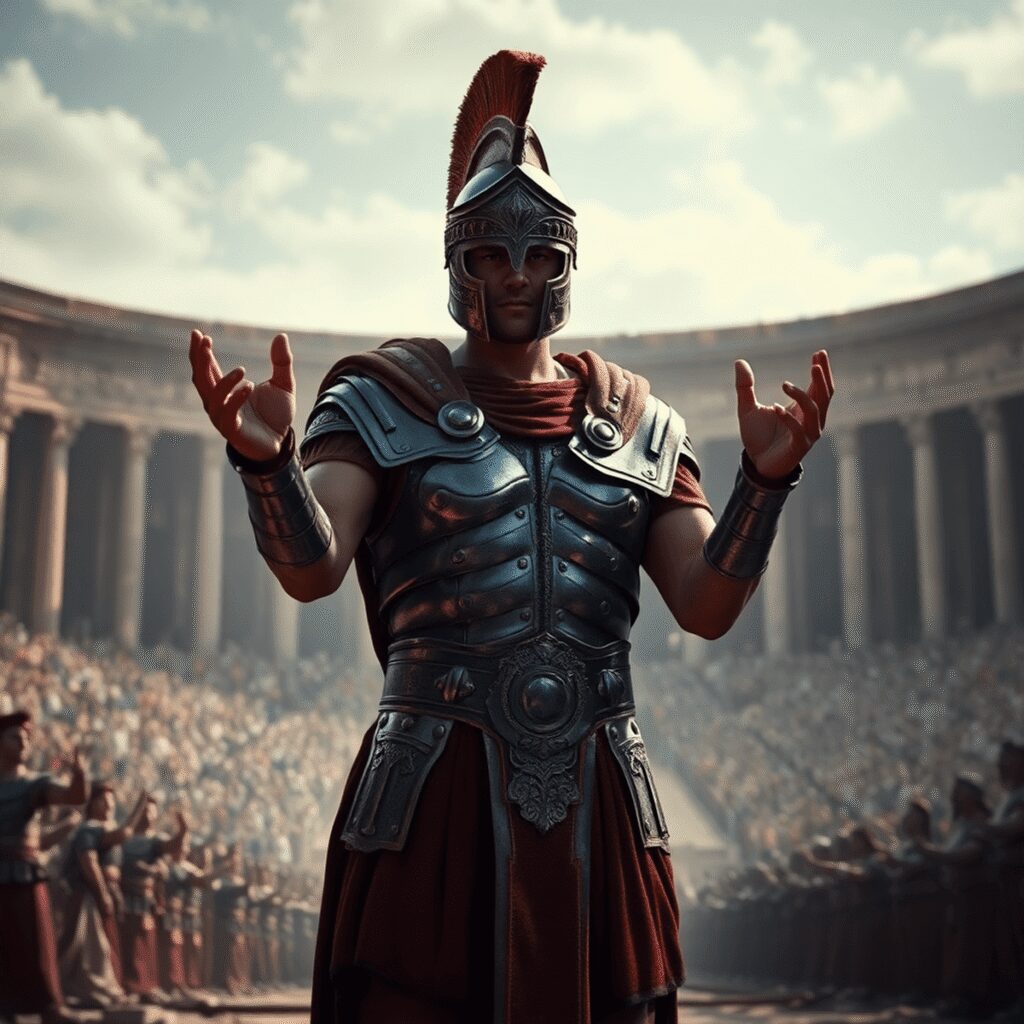
Gladiators Beyond the Arena: Fame and Social Interaction
The world of Roman gladiators extended far beyond the blood-soaked sands of the arena. Their fame and social presence reached various layers of Roman society, influencing culture and public life.
1. Roman Emperors as Gladiators
Roman emperors gladiators took an unusual role by stepping into the arena themselves. Emperors such as Caligula and Commodus participated in staged bouts. These events were carefully controlled—often with dulled weapons or limited combat—to ensure their safety while showcasing their prowess to the populace. Commodus, in particular, treated his performances as a form of political theater, blurring the lines between ruler and gladiator.
2. The Popularity of Gladiators Among the Lower Classes
Gladiators enjoyed immense popularity among the lower classes. They were symbols of strength, endurance, and defiance against adversity. The common people admired their skill and bravery, often following their careers with great enthusiasm.
3. The Fascination of Women with Gladiators
Gladiators also held a special fascination for women of Rome, who collected vials containing their blood or sweat—believed to have cosmetic or even magical properties.
4. The Social Impact of Gladiator Admiration
This admiration created a unique social dynamic where gladiators became celebrities in their own right. Their influence extended into fashion, art, and even religion, reflecting a complex interplay between spectacle and social identity that shaped Roman cultural life.
5. The Political Influence of Gladiators
Interestingly, this influence wasn’t limited to the realm of entertainment; it also seeped into politics and propaganda. Emperors utilized their popularity to bolster their authority, a strategy evident in how they used coins as propaganda to convey their power and legitimacy. These small pieces of currency went beyond their basic purpose and became significant instruments for political messaging.
The Lasting Legacy of the Gladiatorial Secret Language
The cultural impact of The Secret Language of Roman Gladiators: Signs, Signals, and Brotherhoods remains profound in modern society. This secret language symbolizes more than just combat tactics—it reveals a complex social network that shaped identity, loyalty, and survival among gladiators.
The Enduring Influence of Gladiatorial Culture
The Secret Language of Roman Gladiators continues to resonate with us today in various ways:
- Enduring fascination: Movies, literature, and academic studies continually explore gladiatorial signs and signals to decode ancient communication methods.
- Brotherhood ideals: The collegia system inspires contemporary ideas about camaraderie, mutual support, and collective bargaining.
- Symbolism in popular culture: Hand gestures like the debated “thumbs down” evoke powerful imagery tied to life-and-death choices.
- Influence on modern storytelling: The blend of spectacle and secret codes enhances the narrative appeal of gladiators as heroes bound by unspoken rules.
This legacy demonstrates how The Secret Language of Roman Gladiators: Signs transcends history. It offers insights into human connection through coded communication and shared struggle.
The Broader Impact of Roman Society
Furthermore, the influence of Roman society on Western civilization is evident in various aspects of modern life. From their legal systems to their architectural marvels, the legacy of Rome is woven into the very fabric of contemporary society. Additionally, the enduring legacy of Roman law has significantly shaped today’s legal systems across the globe.
FAQs (Frequently Asked Questions)
What was the secret language of Roman gladiators and how did it function?
The secret language of Roman gladiators consisted of signs, signals, and non-verbal cues used in the arena to communicate strategies, intentions, and decisions during combat. This specialized communication helped gladiators coordinate their actions, maintain survival, and reinforce their brotherhoods.
Were all Roman gladiators slaves or were some free men volunteers?
Not all Roman gladiators were enslaved; some were free men who volunteered to fight. Gladiatorial bouts originated as funeral ceremonies and expanded under Julius Caesar’s rule, attracting a social spectrum that included both slaves and free volunteers seeking fame or fortune.
How were Roman gladiators organized in terms of fighting styles and classes?
Roman gladiators were organized into distinct classes based on their skill levels and fighting records. Each class specialized in different fighting styles with specific weapons and armor. Combat rules governed these bouts to limit unnecessary deaths while maintaining entertainment value.
What role did hand gestures like the ‘thumbs down’ play in gladiatorial combat?
Hand gestures and other non-verbal signals played crucial roles during fights for life-or-death decisions. However, common myths such as the ‘thumbs down’ gesture indicating immediate death are debunked; these signs formed part of the secret language that conveyed nuanced messages between gladiators and referees.
What was the collegia system among gladiators?
The collegia system referred to trade unions or brotherhoods formed by gladiators. These groups provided social support, organized collective interests, and had elected leaders who represented the members’ welfare both inside and outside the arena.
How did Roman emperors interact with gladiatorial games and what was the public’s perception of gladiators?
Emperors like Caligula and Commodus participated in staged bouts under controlled conditions to showcase power or entertain. Gladiators enjoyed immense popularity among lower classes and even fascinated women, becoming cultural icons beyond mere fighters due to their bravery, skill, and social bonds.

